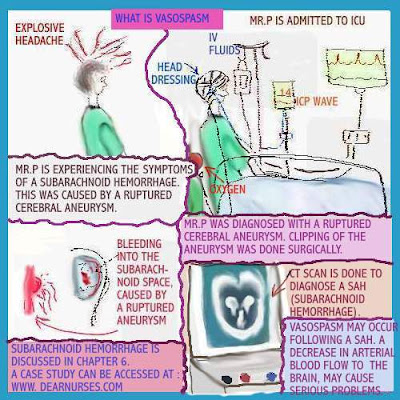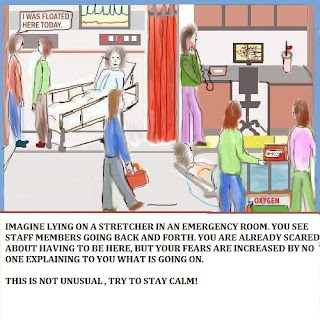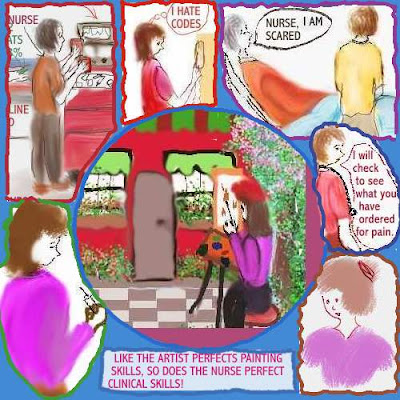PATIENT ASSESSMENT

The patient having chest pain, would have
scales assessment ( 1-10) is usually done.
necessary.
Updated 2/25

 Aspiration pneumonia can be avoided. If the patient has a compromised airway, like the stroke patient, or one who is unconscious , a foreign substance such as stomach content ( from tube feeding) or emesis (vomitus) may enter the lungs. You may also enjoy watching the video:
Aspiration pneumonia can be avoided. If the patient has a compromised airway, like the stroke patient, or one who is unconscious , a foreign substance such as stomach content ( from tube feeding) or emesis (vomitus) may enter the lungs. You may also enjoy watching the video:
In the image above, a skiing accident has occurred.
The injured person is admitted to the ICU. ICP
monitoring has been set up.
Learn more by clicking on the link:
Communication skills

-The nurse notifies the doctor of what has occurred and her
assessment findings. She also mentions the vital signs, low
oxygen saturation, and steps that were taken to correct the
saturation. The doctor gives further orders, including a
transfer to CCU.
.JPG) Updated 6/25
Updated 6/25.JPG)



 Updated 8/25
Updated 8/25
.JPG) Dearnurses.net is no longer available.
Dearnurses.net is no longer available..JPG) Updated 9/25
Updated 9/25

.JPG)

.jpg) Updated 12/25
Updated 12/25Wishing you the very best for the New Year.
Please enjoy the videos:
Sessions 38 - Happy Holiday
and Sessions 61- From holiday cheers to horrors
